Calving pens are critical to the success of a calving season on suckler farms and they must be able to perform a variety of functions.
The first function is calving the cow. While we are hoping cows will require minimal assistance, it is highly likely to happen at some point and so we must have a facility to operate a calving jack and even carry out a C-section if necessary.

Next up is feeding the calf. Again, we are hoping most calves will be able to feed themselves but that’s not always going to be the case.
A calving pen must serve to restrain the cow in order to help a calf suck. And if the calf won’t suck, we need to be able milk the cow.
Bonding
Thirdly, once the calf is up and going, the calving pen is vital to allow at least 24 hours of one-to-one bonding between the cow and her calf before the move to larger batches. In that period, the pair need adequate room while the cow will also need access to water and feed.
It also helps greatly to be able to view all calving pens via a calving camera. Where you feel there is a cow on the point of calving, especially at night time, she can be easily monitored and quickly offered assistance if necessary.
When it comes to calving pens, the more the merrier. However, they are an expensive commodity which often don’t serve much purpose outside of calving time. That is why the vast majority of suckler farms don’t have enough of them.
A good rule of thumb is to have at least one calving pen for every 15 cows due to calve and, in a more intense calving window, one pen for every 10 cows.
If this isn’t the case on your farm, it only exaggerates the need to have all existing ones kitted out to the highest specification possible.
The design
Figures 1 and 2 outline alternative but effective designs for setting up four calving pens. Figure 1 is a very effective design and more widely recommended.

However, it requires the need for an external passageway and is perhaps more suited to new builds.
Figure 2 is a valid design and could be considered in existing sheds where space is limited and a passageway is not an option.

All pens in Figures 1 and 2 have some common features. For a start, pens have a minimum floor area of 16.8m2. This is in line with Department of Agriculture specifications (4.8m x 3.5m). Teagasc research shows an area of 14m2 (4m x 3.5m) is sufficient for a calving pen, however.
All pens have a facility for feeding roughage (hay/silage). In Figure 1, this is done via a feed space out on to the passageway at gates one to four. In Figure 2, this is via a central ring feeder. The downside with this design is that one pen will have to be clear of livestock in order to fill the feeder.
In both designs, the feed options could be replaced by hanging hay racks on the gates of each pen, but farmers should strongly think about the labour implications of refilling these on a daily basis. Small drinker bowls are bolted to the wall in each pen.

Drinker bowl.
The calving gate is without doubt the most important element of the calving pen.
In both designs shown here, each calving gate is servicing two pens (gates five, six, seven and eight).
Some setups will be designed in a way that each pen has its own calving gate. This is an option in Figure 1 at gates 1-4. This calving gate will also function as a feed space.
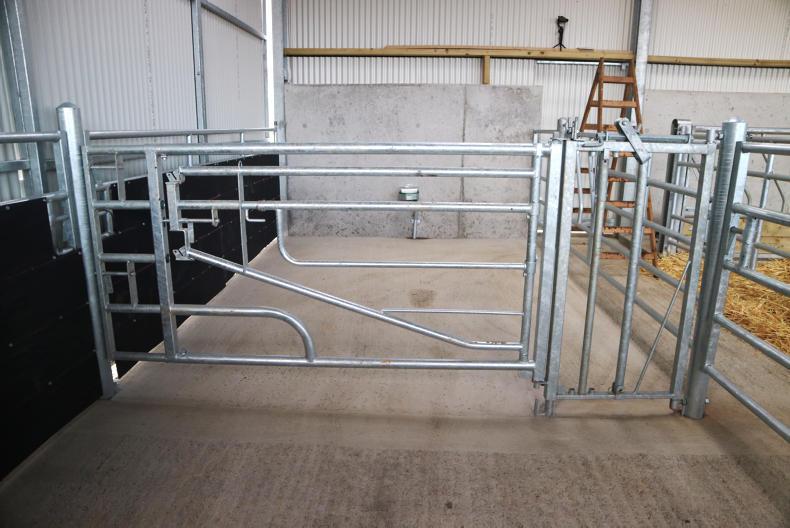
Suckler shed.
Three-in-one designs are best when it comes to calving gates. This includes: a quick-release head gate; a hinged inner gate, which swings closed on the cow as she is driven into the head gate; and a small caesarean gate.The head gate must be quick-release. If a cow goes down, it can be very hard to get her standing up again and there is high risk of her choking within minutes. Most inner gates are slanted up at the end to allow a calf to suck. The calving gate should therefore be hung high enough to allow a calf to suck, even with build-up of straw. The inner gate should be held closed on the cow with a strong chain, which should be above the back. Where the chain is lower and a cow goes down while the vet has his arm inside, the vets arm can be broken. With the chain on top, the animal is free to back out until the headlock gate prevents her going back any further. In larger calving pens, consider a telescopic calving gate to leave it easier to get the cow in.
Calving pens are critical to the success of a calving season on suckler farms and they must be able to perform a variety of functions.
The first function is calving the cow. While we are hoping cows will require minimal assistance, it is highly likely to happen at some point and so we must have a facility to operate a calving jack and even carry out a C-section if necessary.

Next up is feeding the calf. Again, we are hoping most calves will be able to feed themselves but that’s not always going to be the case.
A calving pen must serve to restrain the cow in order to help a calf suck. And if the calf won’t suck, we need to be able milk the cow.
Bonding
Thirdly, once the calf is up and going, the calving pen is vital to allow at least 24 hours of one-to-one bonding between the cow and her calf before the move to larger batches. In that period, the pair need adequate room while the cow will also need access to water and feed.
It also helps greatly to be able to view all calving pens via a calving camera. Where you feel there is a cow on the point of calving, especially at night time, she can be easily monitored and quickly offered assistance if necessary.
When it comes to calving pens, the more the merrier. However, they are an expensive commodity which often don’t serve much purpose outside of calving time. That is why the vast majority of suckler farms don’t have enough of them.
A good rule of thumb is to have at least one calving pen for every 15 cows due to calve and, in a more intense calving window, one pen for every 10 cows.
If this isn’t the case on your farm, it only exaggerates the need to have all existing ones kitted out to the highest specification possible.
The design
Figures 1 and 2 outline alternative but effective designs for setting up four calving pens. Figure 1 is a very effective design and more widely recommended.

However, it requires the need for an external passageway and is perhaps more suited to new builds.
Figure 2 is a valid design and could be considered in existing sheds where space is limited and a passageway is not an option.

All pens in Figures 1 and 2 have some common features. For a start, pens have a minimum floor area of 16.8m2. This is in line with Department of Agriculture specifications (4.8m x 3.5m). Teagasc research shows an area of 14m2 (4m x 3.5m) is sufficient for a calving pen, however.
All pens have a facility for feeding roughage (hay/silage). In Figure 1, this is done via a feed space out on to the passageway at gates one to four. In Figure 2, this is via a central ring feeder. The downside with this design is that one pen will have to be clear of livestock in order to fill the feeder.
In both designs, the feed options could be replaced by hanging hay racks on the gates of each pen, but farmers should strongly think about the labour implications of refilling these on a daily basis. Small drinker bowls are bolted to the wall in each pen.

Drinker bowl.
The calving gate is without doubt the most important element of the calving pen.
In both designs shown here, each calving gate is servicing two pens (gates five, six, seven and eight).
Some setups will be designed in a way that each pen has its own calving gate. This is an option in Figure 1 at gates 1-4. This calving gate will also function as a feed space.

Suckler shed.
Three-in-one designs are best when it comes to calving gates. This includes: a quick-release head gate; a hinged inner gate, which swings closed on the cow as she is driven into the head gate; and a small caesarean gate.The head gate must be quick-release. If a cow goes down, it can be very hard to get her standing up again and there is high risk of her choking within minutes. Most inner gates are slanted up at the end to allow a calf to suck. The calving gate should therefore be hung high enough to allow a calf to suck, even with build-up of straw. The inner gate should be held closed on the cow with a strong chain, which should be above the back. Where the chain is lower and a cow goes down while the vet has his arm inside, the vets arm can be broken. With the chain on top, the animal is free to back out until the headlock gate prevents her going back any further. In larger calving pens, consider a telescopic calving gate to leave it easier to get the cow in. 








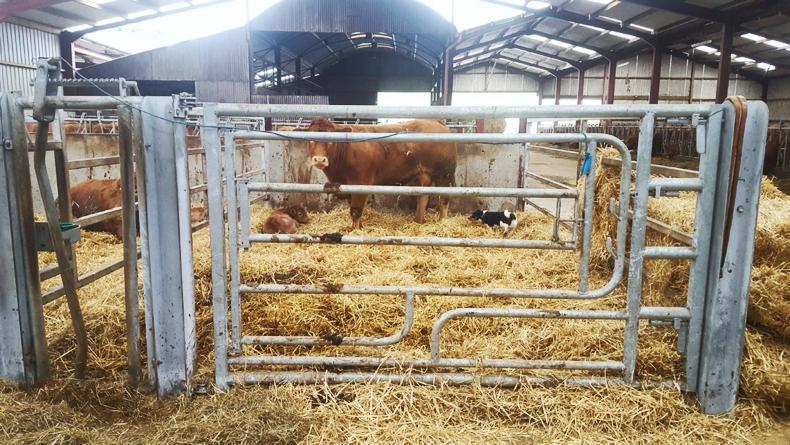
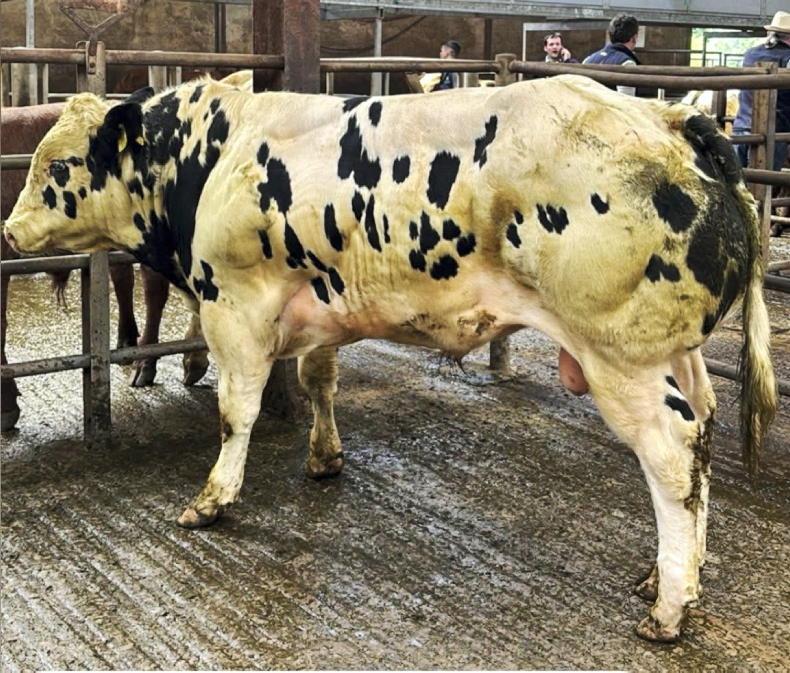

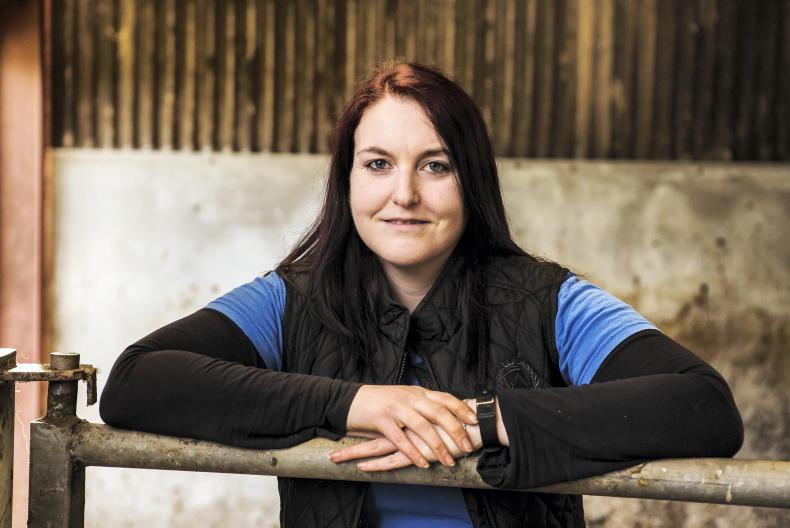
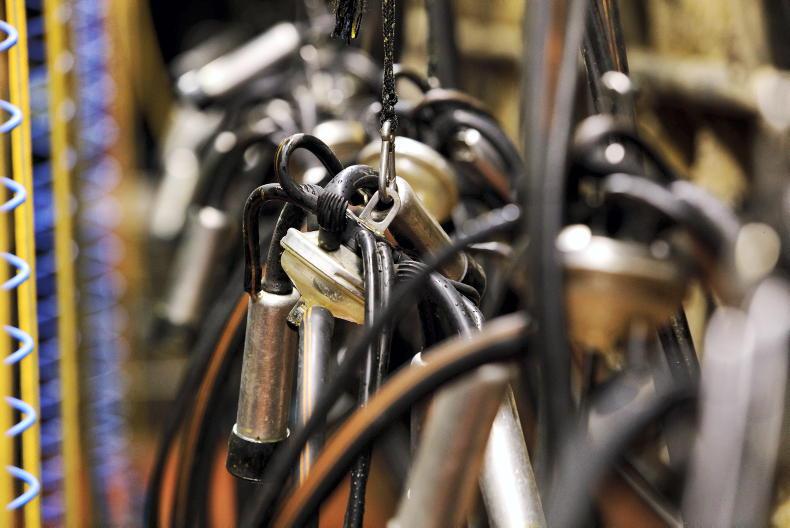
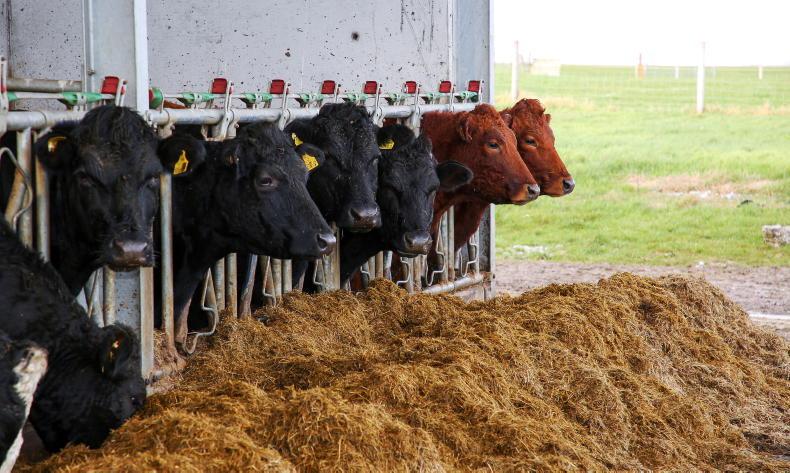
SHARING OPTIONS